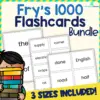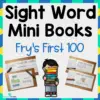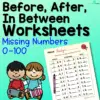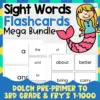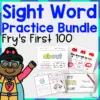Brighten everyone’s day with these ten rainbow activities that teach children creativity. This list includes crafts and activities that are both fun and engaging for children.
They are a perfect companion to lessons on rainbows and colors or to have fun on cloudy days. Check out our list made for children with different skill levels.
Great Rainbow Art for Preschoolers
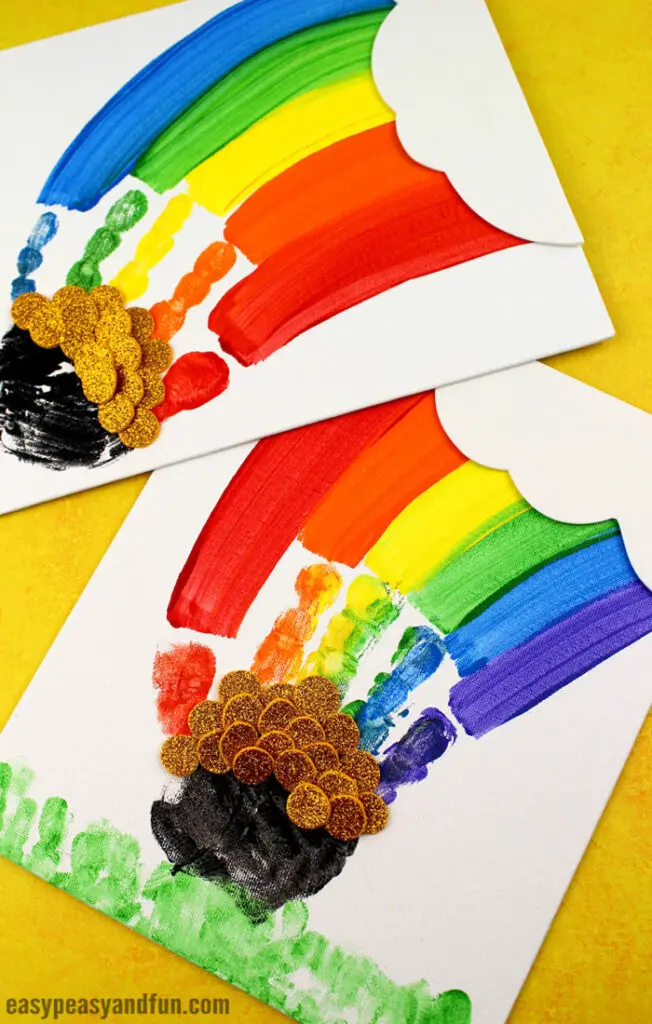
This handprint rainbow will delight even the hard-to-catch leprechauns. Children will blast making this rainbow with a pot of realistic-looking gold.
As children use the paintbrush to add color, they will improve their fine motor. Use this craft to teach children about St. Patrick’s Day, learn about colors, and count as many gold pieces as they can.
Use a palette or paper plate to prepare the paints needed for this craft. Let children paint their thumb red, index finger orange, middle finger yellow, ring finger green, and pinkie blue. This part is for the rainbow.
Their palms should be covered with black paint to make the pot. Ensure that the paint is applied thickly before pressing on the corner of a canvas. Finger-paint some green grass on the bottom of the canvas.
Once the handprint is dry, add a layer of rainbow extending from the handprint. Refer to the pictures on site for the step-by-step process.
Make the gold by cutting circles from the gold glitter foam and stick these on the black pot. Cut white foam to make the cloud and attach it to the top of the rainbow.
For this activity, you will need:
- Paints
- Shallow pan
- Paintbrush
- Canvas or paper
- Gold glitter and white foam sheets
- Glue
- Scissors
For more information on this activity, go to EasyPeasyAndFun.com.
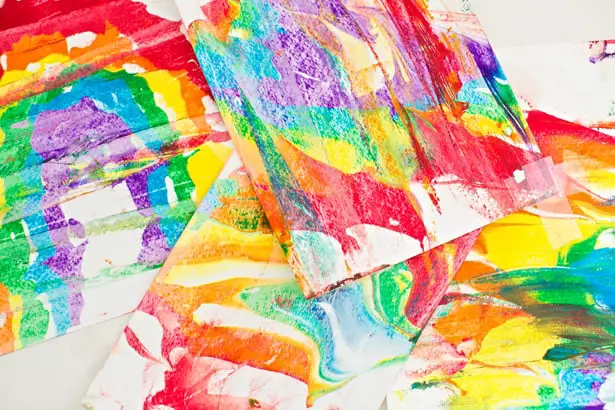
Here’s a sensory activity that turns into an abstract artwork enough to bring out the Pollock in every child.
Start with cutting the watercolor paper in a size that will fit the inside of the pan. Use a clean, shallow pan or baking dish for this activity. Fill it with shaving cream and add the rainbow colors in order-red, orange, yellow, green, blue, and purple.
Ensure that the colors are added in an arch shape that mimics the rainbow. Gently press the paper on the shaving cream mixture. Use a scraper or a piece of watercolor paper to remove the excess paint and shaving cream.
Add more paper to create more rainbow prints. The site recommends layering the pan with shaving cream and painting once more when the original mixture becomes muddy.
It is also recommended to add a heavy object on the sides of the paper while laying it down as it dries to prevent the paper from curling.
For this activity, you will need:
- Paint in the colors of the rainbow
- Shallow pan
- Watercolor paper
- Scraper
- Shaving cream
For more information on this activity, go to HelloWonderful.co.
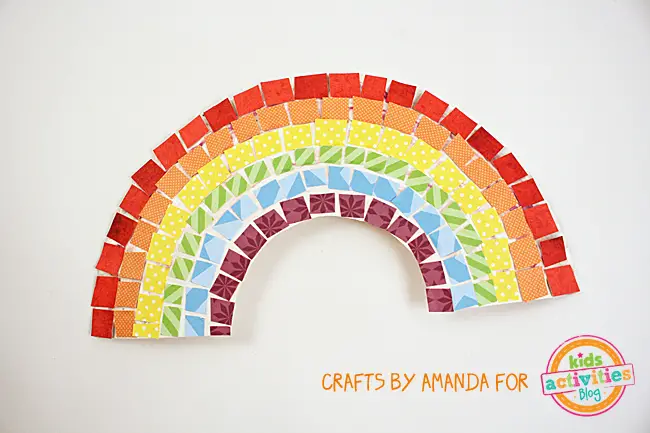
This craft is a fun and easy way to make rainbows. Children will enjoy the cutting and pasting part as they complete their colorful mosaics.
As they cut and glue the small papers, positioning them correctly so they are evenly spaced between each one, their hand-eye coordination and patience will improve.
To make this craft, cut a paper plate in half. Make a slight arch on the half plate by cutting out the bottom part. See the pictures on the site for this step.
Next, prepare the scrapbook papers by cutting them into small squares. Let children cut these to resemble the tiles used in making mosaics. The papers should follow the colors of the rainbow.
To assemble the rainbow, start gluing the red squares on the topmost part of the paper plate. If possible, draw a line on the paper plate with a pencil as a guide for children. Fill the paper plate from end to end.
Repeat the process with the orange, yellow, green, blue, and purple. Allow this to dry before using.
For this activity, you will need:
- Paper plate
- Scrapbook paper
- Scissors
- Glue
For more information on this activity, go to KidsActivitiesBlog.com.
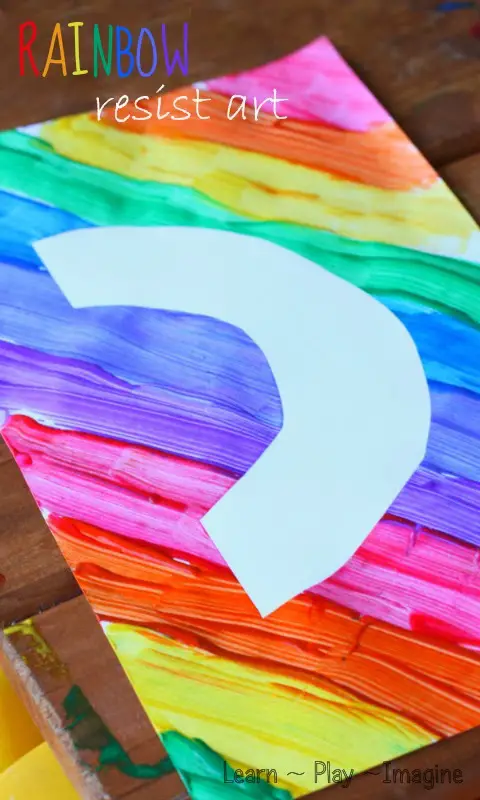
This “rainbow on rainbow” activity uses a unique paint resist technique. Help children understand that by using contact paper, no paint will penetrate through. Also, the final product is a white rainbow, but the background is filled with colors.
Start by cutting an arch shape on the contact paper. Stick this on the cardstock. Prepare the rainbow colors by putting them on a palette or in small containers.
Let the children apply the paint on the paper. Once finished, let this dry and remove the contact paper to reveal the white rainbow.
The site recommends starting this activity by demonstrating the step-by-step procedure. Since this is a process art activity, the results of each child’s output may vary.
Provide an opportunity for children to be themselves as they choose the colors they want to use, how they will paint them on paper, and the many other unique designs they will make.
This way, they will not only be more skilled in manipulating paintbrushes, which is a great fine motor skill, but they will also learn to be creative by expressing themselves through colors.
For this activity, you will need:
- Paint
- Paintbrush
- Contact paper
- White cardstock
- Scissors
- Glitter
For more information on this activity, go to LearnPlayImagine.com.
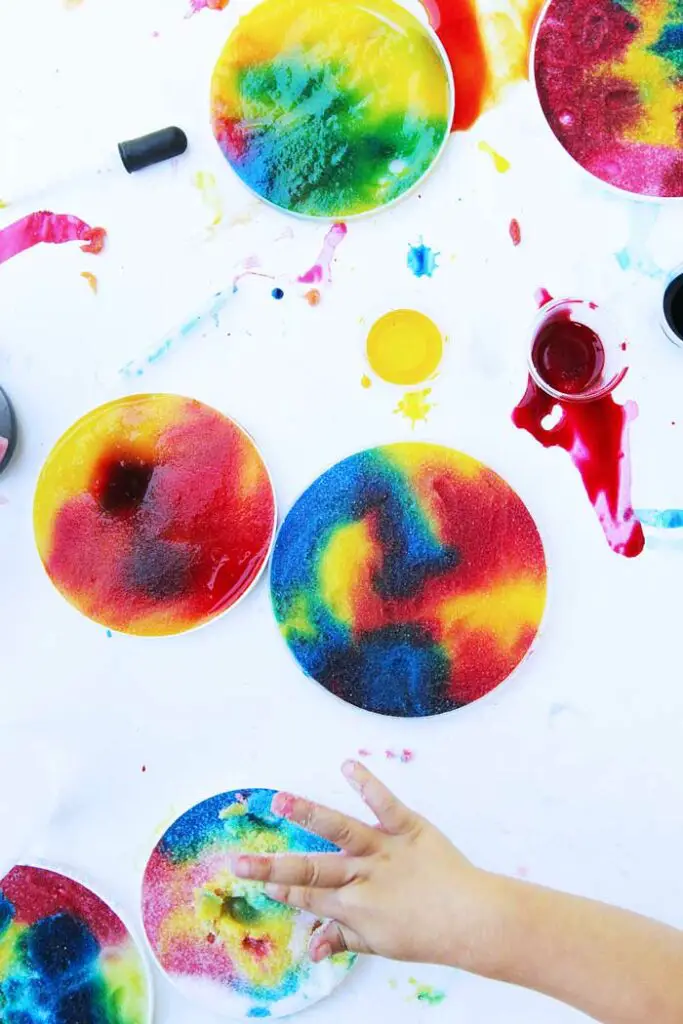
This activity uses a common seasoning found in every kitchen salt. This craft is an excellent way to show children the concept of color mixing. Let children discover what colors will appear as they layer them one drop at a time.
As they use the medicine dropper, their three-finger grasp will improve. This skill is essential when writing.
Start by arranging the liquid colors in small containers. The site recommends using one tablespoon of water to six drops of red and yellow watercolors. For the blue watercolor mixture, use only four drops.
Next, place some salt on plastic lids. Shake the lid well to make sure that the salt is evenly spread. Use the dropper to add the first color to the salt gently. Next, add a second color and let the children observe the changes.
Continue adding colors until the whole lid of the salt is filled with colors. The children’s output may vary at the end of the activity since this is a process art.
Allow children to be creative as they choose the color and amount they will use for this activity.
For this activity, you will need:
- Red, yellow, and blue watercolors
- Water
- Droppers
- Recycled plastic lids
- Small containers
- Glue
For more information on this activity, go to BabbleDabbleDo.com.
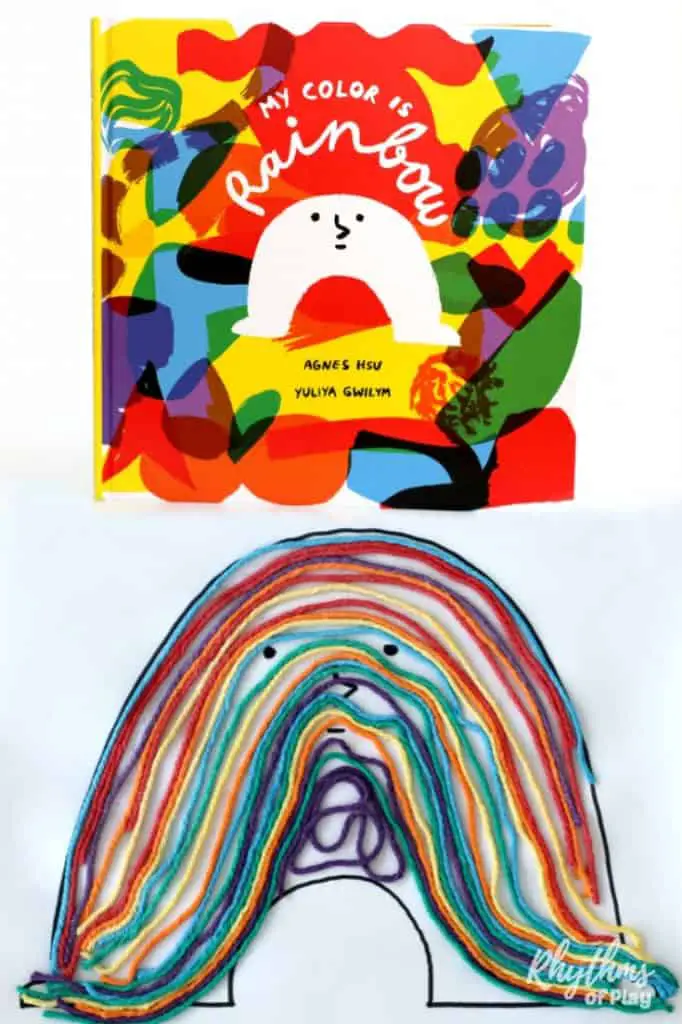
This rainbow craft is inspired by the book “My Color Is Rainbow” by Agnes Hsu. The story is about a white arch on a journey to find its color. Let children enjoy this yarn art activity.
Using many yarns to fill the arch teaches patience among children, aside from improving their eye-hand coordination. Allow children to make mistakes in this activity and encourage them to keep going if they feel like quitting.
Start by drawing the little arch on cardstock using a black marker that will not bleed once it gets wet. Refer to the book or the pictures on the site for this part. The site recommends just drawing a normal arch without the face for children unfamiliar with the book.
Cut and arrange the yarn according to the rainbow’s color. The yarn should be about ten to sixteen inches in length. Create a water-glue mixture by mixing the exact amount for each.
Soak each strand of yarn in the mixture and carefully place it on the arch. Repeat the process until the arch is completely covered. Wipe the drips from the mixture with a wet rag.
For this activity, you will need:
- Cotton yarn in red, orange, yellow, green, blue, and purple
- Glue
- Water
- Small bowl
- Black marker
- Cardstock
- Scissors
- Wet rag
For more information on this activity, go to RhythmsOfPlay.com.
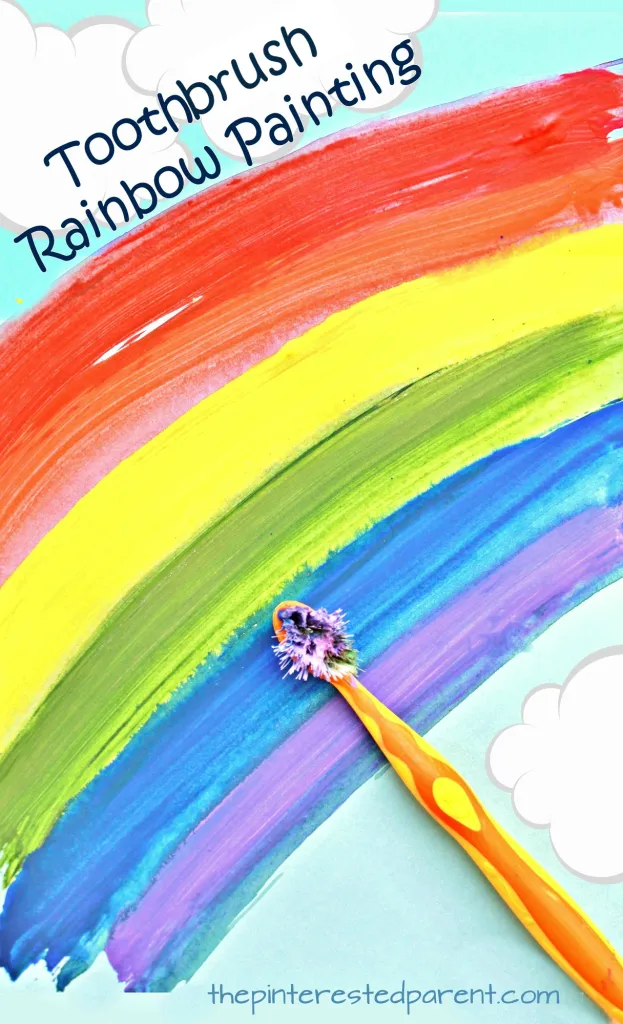
Toothbrush painting is a creative way to use to add color without the use of a paintbrush. This activity is effortless that young learners can follow, and it is gratifying. As they paint, their fine motor skills will improve.
Start by placing an ample amount of paint in a palette. Use colors of the rainbow if possible. Thin out the paint with water if it is too thick.
A new toothbrush is not necessary for this activity. However, ensure that the old toothbrush is clean and dry.
Let the child dip the toothbrush in the red paint. Allow the child to make an arch on the cardstock with it. For younger children, it is advisable to draw arches as a guide for them to follow.
Repeat the process with the same color until no white background can be seen. Next, add the second color of paint. Brush underneath the red. Let children know that it is ok if some parts of the color get mixed in the process.
Continue adding the colors until the rainbow arch is complete. If possible, use one toothbrush for every color. Otherwise, wash the toothbrush before using it in a different color.
For this activity, you will need:
- Palette, small containers, or mini muffin tins
- Paints
- White cardstock
- Old toothbrush
For more information on this activity, go to ThePinterestedParent.com.
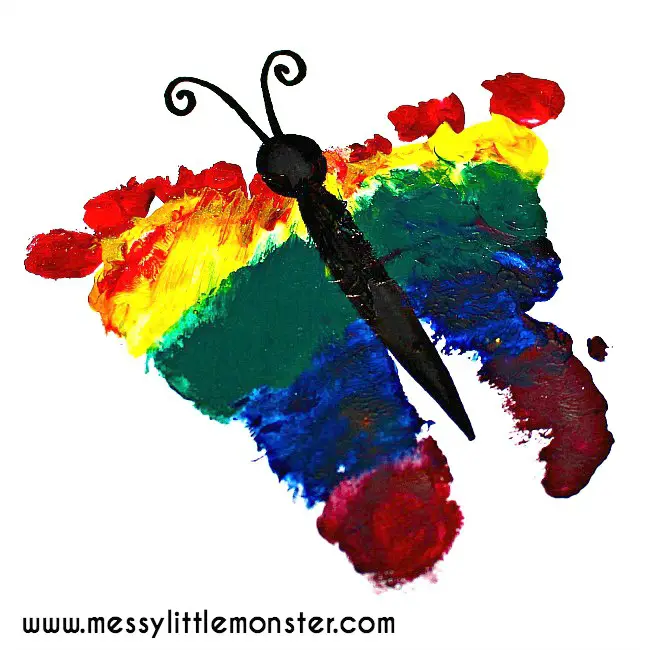
What’s better than a footprint turned into a butterfly? A butterfly footprint with rainbow colors, that is. Use this craft to frame for everyone to see or to add to the child’s collection of footprint keepsakes to mark the child’s age.
This craft is simple to make but requires patience to cover the children’s feet with color. It also requires an adult’s assistance as the children place their feet on the cardstock.
This activity teaches children colors in a fun and enjoyable way.
Start by applying paint to the feet using a paintbrush or a paint foam sponge. Paint with the colors of the rainbow in order, if possible. Carefully position the child’s foot on the cardstock or canvas.
Next, assist the child as the second foot is placed close to the first. Let the child not move for a few seconds to prevent paint smudges on the cardstock. Ready a rag to wipe off the child’s feet afterward.
Once the paint dries, use black paint to draw the body and antenna of the butterfly. Let this dry before displaying.
For this activity, you will need:
- Paints
- Paintbrush or paint foam sponge
- Cardstock or canvas
For more information on this activity, go to MessyLittleMonster.com.
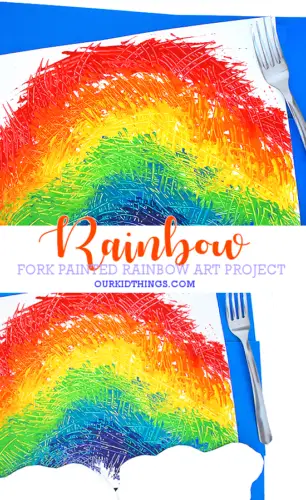
Here’s an exciting way to add texture to paints-use a fork. This utensil is not just handy for spearing food. It is also an excellent tool for budding artists.
This rainbow craft is a perfect example of how an ordinary tool can be used to create a masterpiece.
Teach children about the concept of texture in painting. One way to do this is by using the tines on the fork to make fine scratches.
Start with creating a rainbow by painting a white cardstock with red. Paint the first color in an arch shape. While the paint is still wet, run the fork in short movements to make fine line markings. Let this dry.
Repeat this process for orange, adding enough paint to see the layers. Ensure a clean fork is used for the next color to prevent color mixing.
Do the same steps for the yellow, green, blue, and purple. Once the paint is dry, display this art piece for everyone to see.
For this activity, you will need:
- Paints
- Paintbrush
- Fork
- Cardstock
For more information on this activity, go to OurKidsThings.com.
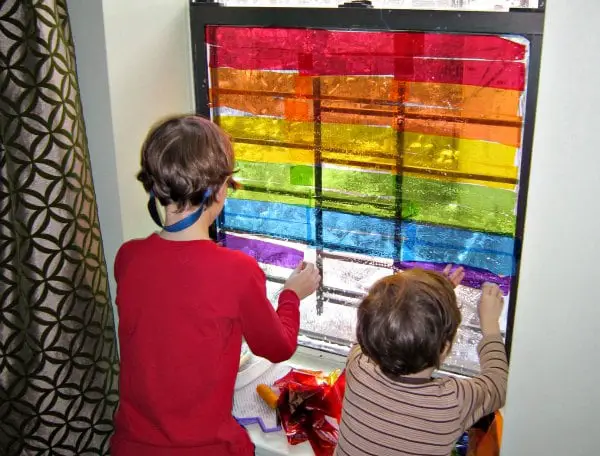
This glass is not just greener but more colorful on the side of the world. As children use the paintbrush to apply the solution to the window, they can work their arms in various and precise movements.
Sticking the cellophane will help improve hand-eye coordination skills. Use this activity to teach children the colors of the rainbow. Modify the activity by cutting the cellophane in different shapes and designs to teach other concepts.
Begin this activity by ensuring the windows are clean and dry. This step will help the cellophane better adhere without dirt and grime. Place the towels on the window panes and the floor to catch the drips.
Next, mix two parts of water with one part of dishwashing soap. In a small pail or container. Have the children dip their paintbrushes and let them cover the area with the mixture.
Stick the cellophane carefully on the window. Start with the red on top, followed by the orange, until the children reach the end of the window. Repeat this process until the window is covered with rainbow colors.
For this activity, you will need:
- Colored cellophane
- Dish soap and water mixture
- Container for the mixture
- Paintbrush or paint roller
- Towels
For more information on this activity, go to HandsOnAsWeGrow.com.
Conclusion
The rainbow activities on this list encourage children to be creative and look at the world with bright and inviting colors. Invite them to participate in these wonderful activities, have fun, and learn.
Consider using them as you make lessons or plan a children’s party. We hope you like our list. Thank you for reading!
For more colorful preschool crafts, check these out:


